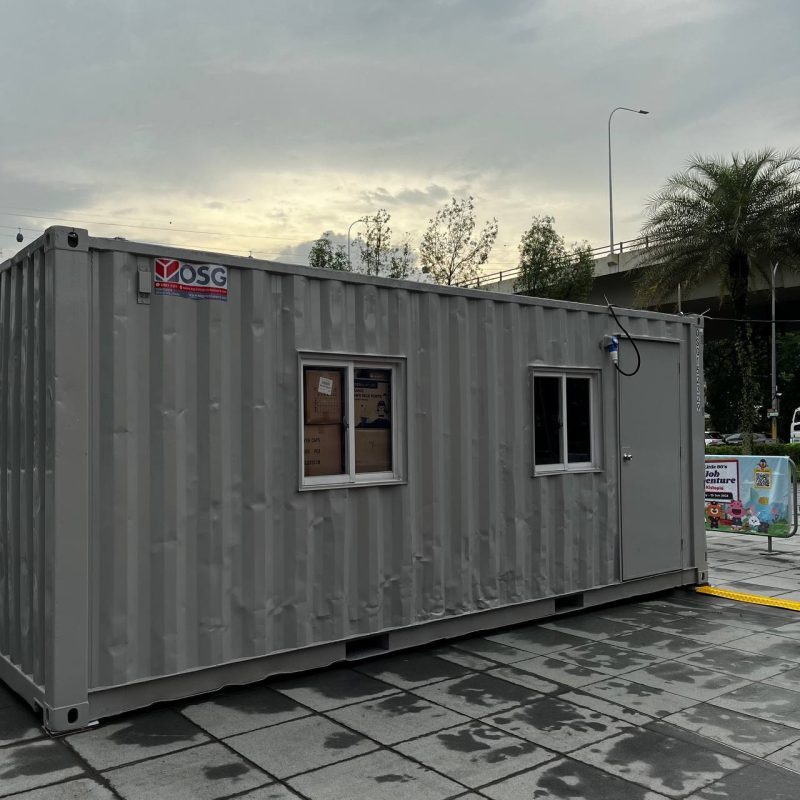Transforming Spaces: Innovative Uses for Shipping Containers in Modern Architecture

In the ever-evolving world of architecture, shipping containers have emerged as a symbol of creativity and sustainability. What was once seen merely as a steel box used for transporting goods across oceans is now being transformed into innovative, functional, and aesthetically pleasing spaces. The rise of container architecture is not just a trend but a testament to the growing demand for cost-effective, sustainable, and modular building solutions.
The Appeal of Shipping Containers in Architecture
Shipping containers, with their uniform shape, durability, and availability, offer a unique opportunity for architects and designers to experiment with modular construction. These steel boxes are inherently strong, weather-resistant, and designed to be stacked, making them an ideal building block for a variety of architectural projects.
- Sustainability
One of the primary reasons for the popularity of container architecture is its sustainability. Reusing shipping containers that would otherwise sit idle in ports or be scrapped helps reduce waste and minimizes the environmental impact of construction. Additionally, the process of converting a container into a usable space requires significantly less energy and resources compared to traditional construction methods.
- Cost-Effectiveness
Shipping containers offer a cost-effective solution for building, especially in urban areas where land and construction costs are high. The containers themselves are relatively inexpensive, and their modular nature allows for quicker construction times. This can result in significant savings in both materials and labor, making it an attractive option for budget-conscious projects.
- Versatility and Flexibility
The versatility of shipping containers is another key factor in their appeal. They can be used to create a wide range of structures, from simple single-container homes to complex multi-container buildings. Containers can be easily modified, stacked, and arranged in various configurations, allowing architects to experiment with different layouts and designs. This flexibility enables the creation of unique spaces that cater to specific needs and preferences.
Innovative Uses of Shipping Containers in Modern Architecture
The use of shipping containers in architecture has led to the development of a diverse range of projects, from residential homes to commercial spaces and even public installations. Here are some of the most innovative applications of container architecture:
- Residential Homes
One of the most common uses of shipping containers is in the construction of residential homes. Container homes are gaining popularity among those seeking affordable and sustainable housing solutions. These homes can range from compact, minimalist designs to luxurious, multi-story residences. The modular nature of containers allows homeowners to expand their living spaces as needed, making it a flexible option for growing families.
- Commercial Spaces
Shipping containers are also being used to create unique commercial spaces. Pop-up shops, cafes, and restaurants made from containers have become a common sight in urban areas. These structures are not only cost-effective but also offer a trendy, industrial aesthetic that appeals to modern consumers. In addition, the portability of containers allows businesses to relocate their operations easily, making it an ideal solution for temporary or mobile ventures.
- Office Buildings
Container architecture has also made its way into the corporate world, with innovative office buildings being constructed from shipping containers. These spaces offer a creative alternative to traditional office environments, providing employees with a unique and inspiring workspace. Container offices are particularly popular in tech startups and creative industries, where unconventional design is often embraced.
- Educational and Community Spaces
Shipping containers are being used to create educational and community spaces in areas where traditional construction may not be feasible. Schools, libraries, and community centers made from containers provide affordable and quickly deployable solutions in underserved or disaster-stricken regions. These structures can be easily transported and assembled, offering a practical way to address the urgent need for such facilities.
- Art and Cultural Installations
Artists and designers have also embraced the use of shipping containers to create temporary or permanent art installations. These structures can serve as galleries, exhibition spaces, or even as the canvas itself. The industrial look of the containers provides a stark contrast to the creative works displayed within, adding an additional layer of intrigue to the installation.
Challenges and Considerations
While the use of shipping containers in architecture offers numerous benefits, there are also challenges to consider. Containers are typically designed for storage, not habitation, so modifications are necessary to ensure they meet building codes and standards for insulation, ventilation, and structural integrity. Additionally, the steel used in containers can make them prone to rust if not properly treated, and the confined spaces may require creative solutions to maximize comfort and usability.
The Future of Container Architecture
The innovative use of shipping containers in modern architecture is likely to continue as the demand for sustainable and affordable building solutions grows. As architects and designers push the boundaries of what can be achieved with these versatile structures, we can expect to see even more creative applications in the future.
From residential homes to commercial spaces and public installations, shipping containers are proving that they are more than just metal boxes. They are a symbol of innovation, sustainability, and the endless possibilities that arise when we think outside the box.
 Singapore
Singapore Australia
Australia Indonesia
Indonesia Japan
Japan Malaysia
Malaysia New Zealand
New Zealand Philippines
Philippines South Korea
South Korea Taiwan
Taiwan Thailand
Thailand VIETNAM
VIETNAM
